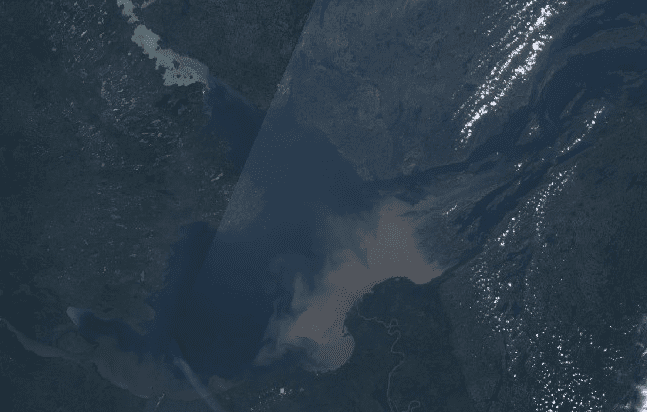Following a summer and fall of cloudy waters in Great Slave Lake and the Hay and Slave Rivers, the Department of Environment and Natural Resources (ENR) have completed their water quality analysis and determined that elevated traces of “some metals and hydrocarbons” in the waters “are not expected to pose a health risk to aquatic life.”
In August, ENR told NNSL Media that silt plumes were a result of high water levels creating surface runoff. After a season of unusually high rainfall, snowmelt and a prolonged release from two BC Hydro dams, the water that runs over the ground carries dirt into the lakes and rivers, which in turn creates the sediment that residents were reporting, ENR spokesperson Darren Campbell said at the time.

Hub.
While the department’s water sampling and analysis found “concentrations of some metals and hydrocarbons” to be elevated in July due to “unprecedented high flows,” they found “the majority returned to their normal range in August.”
“It is normal to see increased suspended sediment, metal and hydrocarbon concentrations when water levels are high as particles within and along the river are carried downstream,” ENR wrote in a news release Friday.
“These increases are observed every spring with snowmelt, and have lasted longer this year due to prolonged high water levels across most of the Mackenzie River Basin, including the Athabasca, Peace, Hay, Slave and Liard Rivers.”
On how these substances got into the water in the first place, the department advised that in addition to possible association with industrial projects, like oil sands development, metals like iron and copper are naturally occurring.
Iron for example, can be released into the environment from the weathering of certain rocks. These metal particles then attach to smaller particles like clay, silt and fine sands to make up muddy waters.
Hydrocarbons, likewise, occur naturally from sources like forest fires and natural petroleum and gas deposits, though they can also enter water systems through liquid waste, air emissions, oil and gas activities and oil sands developments, ENR wrote.
On whether or not the sediments are of concern to aquatic life, ENR states that the toxicity of metal depends on whether it is dissolved in the water or attached to dirt particles.
They said that while concentration of several metals measured in July and August exceeded levels set out by the Canadian Environmental Quality Guidelines for the protection of aquatic life, the metals found in highest concentrations were attached to small particles in the water column – a form not easily absorbed by fish and other aquatic life.
Concentrations of dissolved metals were only slightly elevated above historic levels, ENR advised, “therefore, the impact of the cloudy or muddy waters in the Slave and Hay Rivers and in Great Slave Lake are not expected to have impacted fish or other aquatic organisms this past summer.”
Each year, the GNWT monitors water quality on the Slave, Hay, Liard and Peel Rivers as well as on Great Slave Lake at Resolution Bay, near the mouth of the Hay River and Yellowknife Bay.
The conclusion that elevated traces of sediments are not a health risk is based on water sampling conducted in July, August and September 2020.
“Healthy water is of the utmost importance to the NWT and its residents,” said ENR Minister Shane Thompson.
“The high water levels we’ve seen this summer and fall in the Northwest Territories were unprecedented and temporarily increased levels of suspended sediments, and some metals and hydrocarbons in the Slave and Hay Rivers. The data and information we have gathered suggests that impacts to fish are not expected.”
He said the department will “continue to gather information on our water, through the GNWT’s regular water quality and quantity monitoring program, and will continue data sharing efforts as part of our transboundary water agreements to help ensure the waters of the NWT remain clean, abundant and productive for all time.”